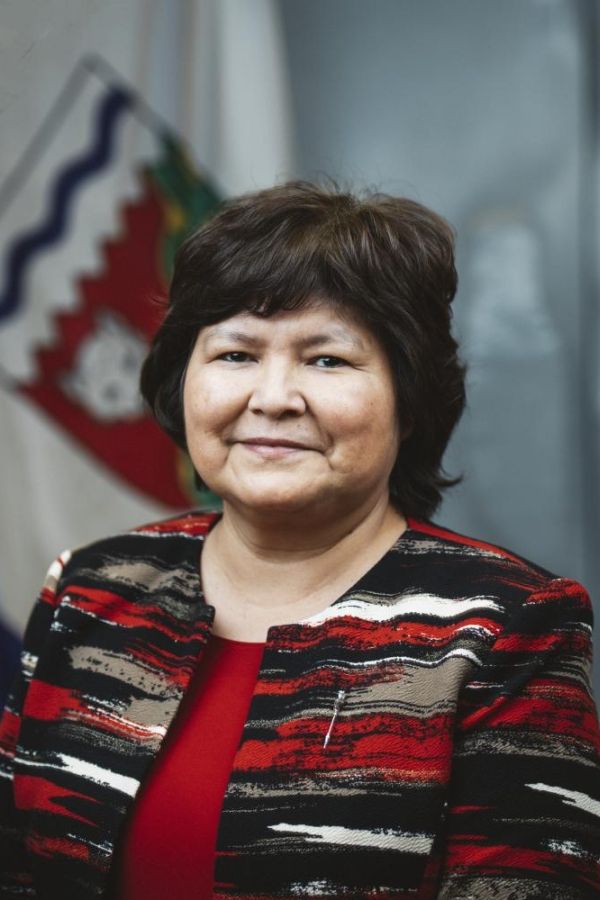Debates of February 22, 2024 (day 8)
Question 75-20(1): 2023 Enterprise Wildfire Management

Thank you, Mr. Speaker. My questions are for the Minister of Environment and Climate Change. Mr. Speaker, can the Minister of Environment and Climate Change explain why the GNWT failed to contact the community of Enterprise on August 13th to inform them of an impending wildfire that was being pushed towards them very quickly due to high winds? Thank you.
Minister of Environment and Climate Change.

Thank you, Mr. Speaker. Mr. Speaker, I can assure this House that the wildfire that went on to impact the community of Enterprise was initially attacked on the first day it was detected on August 2nd and was actioned consistently prior to the tragic event of August 13th. The fire crews actioned the fire was actioned by crews and aircraft that were allowed but the extreme fire conditions and extreme fire behaviour made fighting the fire very challenging.
The incident commander had daily contact with the regional emergency management organization. On August 13th, ECC officials contacted MACA twice, first about preparing for the evacuation alert, then about upgrading the evacuation alert to an evacuation order of Hay River and Enterprise, and a virtual meeting was held. At this time, the fire was approximately 30 kilometres away from the community, and there was a participant from the hamlet of Enterprise on the call. Thank you, Mr. Speaker.

Thank you, and thank you to the Member for that the Minister. Mr. Speaker, I understand that this ECC Minister was not Minister on August 13th last year, but can the Minister explain if the department was aware of the level of risk that Enterprise was in that day when they were forced to evacuate the community? Thank you.

Thank you, Mr. Speaker. Mr. Speaker, ECC was aware that the communities in the area were at risk, and that is why the evacuation notice and then upgraded to the evacuation alert before finally being put on full evacuation. ECC and MACA have a wildfire event notification protocol advertising on what level of risk a wildfire may pose to a community. The protocol determines when and how ECC will advise MACA of the threat level to a community and when evacuation is recommended. The fire was between 25 and 30 kilometres to the north and west of the community at noon on August 13th, and the fire activity on the east side of the fire had been quiet. Control efforts on the east and north flanks, the closest to Enterprise, had held for the days leading up to August 13th. Weather and fire behaviour modeling predicted that the fire would spread northeast towards Great Slave Lake and possibly Hay River. However, late in the day, the wind switched direction spreading the fire directly toward Enterprise. Thank you, Mr. Speaker.

Thank you, Mr. Speaker, and thank you to the Minister. Mr. Speaker, can the Minister explain if ECC has in place any sort of early warning detection system for natural disasters to help protect communities in an answer safety to disasters? Thank you.

Thank you, Mr. Speaker. Mr. Speaker, ECC has a series of tools that are used to detect and monitor wildfires, including lightening detection, weather stations, fire detection towers, satellitebased remote sensing, and aircraft smoke patrols. In the event of a wildfire, additional monitoring is put in place depending on the location and nature of the fire. ECC's valueatrisk system automatically notifies managers of values that may be potentially at risk. Thank you, Mr. Speaker.
Minister of Environment and Climate Change. Final supplementary. Deh Cho.

Thank you, Mr. Speaker. Mr. Speaker, I know that fire lookout towers were widely used tool to combat wildfires in the past. Can the Minister tell us if fire lookout towers are still being used by ECC across the NWT, and are they still considered an effective tool to use against wildfires? Thank you.

Thank you, Mr. Speaker. Mr. Speaker, fire towers have been used as one of the series of tools used by ECC to detect wildfires, including smoke patrols, lightening detection, networks, weather stations, satellite base and public reporting. The industry standard for fire towers is moving away from having people work in isolation for safety reasons. However, fire towers are being used to house communications, equipment, and detection cameras. ECC is investing in remote camera networking to provide 360degree coverage and operate 24 hours a day providing a proven and effective way to monitor new and ongoing fires. The camera detection network will be greatly expanded into the area of NWT where wildfires can be detected. Thank you, Mr. Speaker.
Minister of Environment and Climate Change. Oral questions. Member from Range Lake.

















